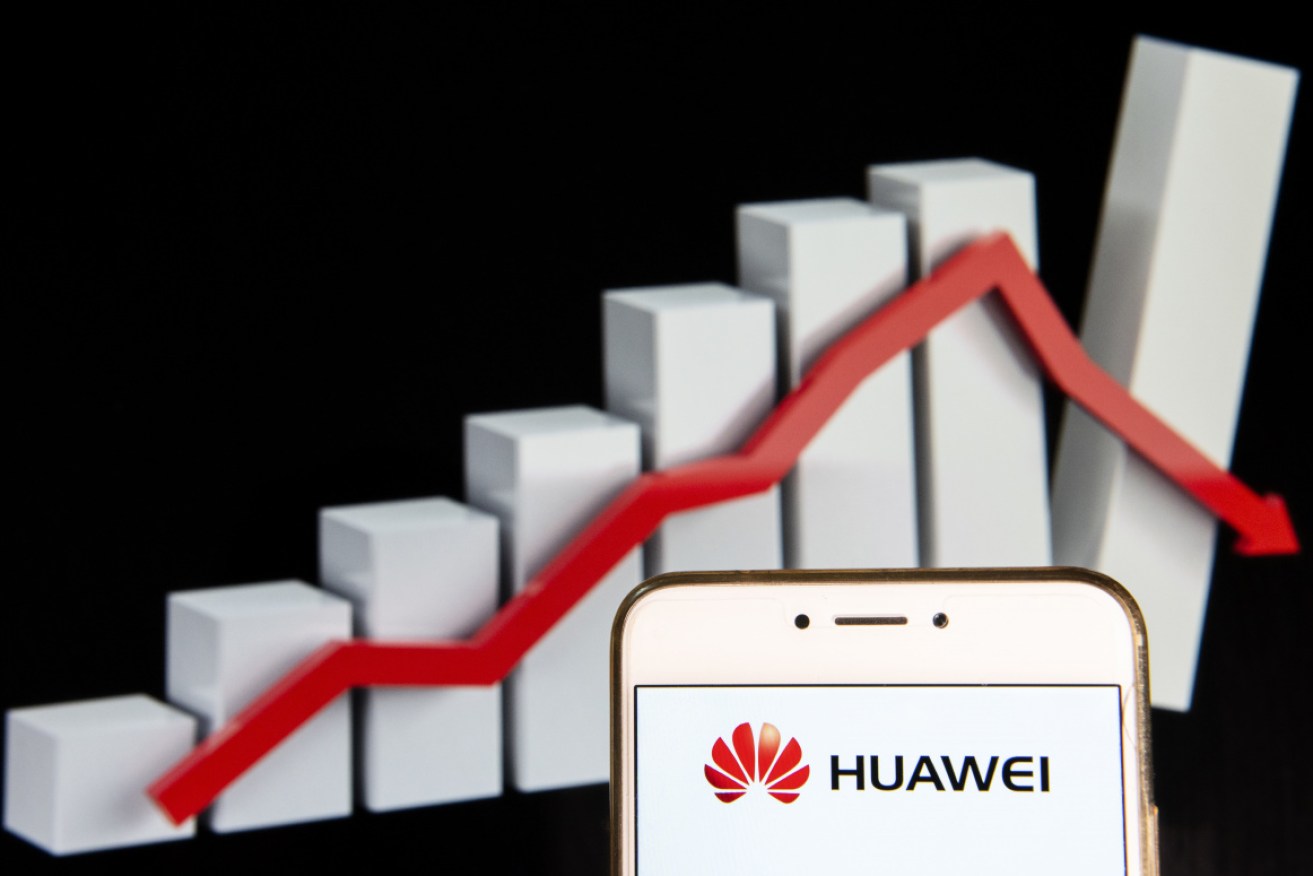Wall Street reacts to Trump’s potential tech ban

Dow Jones has dropped again following reports Mr Trump is considering banning Huawei and ZTE. Photo: Getty
Volatility has become the new norm for stock markets, particularly Wall Street.
It was only yesterday that the Dow Jones posted a record-breaking 1086-point surge – and earlier this week, its worst-ever Christmas Eve sell-off.
But overnight, the Dow dropped by as much as 600 points, before managing a comeback to finish 260 points higher – an 860-point difference from peak to trough.Given the tumble in US investor sentiment, the Australian share market is headed for a steep fall in early trade.
ASX futures are pointing to a flat opening for the local share market – a significant improvement over the 1.5 per cent drop that was expected initially.
Meanwhile, the Australian dollar has fallen sharply to 70.3 US cents, 55.6 British pence and 61.5 Euro cents at 8.15am Friday (AEDT).
Trade tensions and falling confidence
US-China trade tensions were, once again, a trigger for the market’s anxiety.
It follows a report that US President Donald Trump is considering an executive order in the new year to declare a national emergency that would ban US companies from using telecommunications equipment made by China’s Huawei and ZTE, according to Reuters.
The United States maintains both companies work at the behest of the Chinese government and that their equipment could be used to spy on Americans.
This is the Trump administration’s latest attempt to cut Huawei and ZTE – two of China’s biggest technology companies – out of the US market.
It comes at a time when the US and China are trying to strike a permanent trade deal before their 90-day truce expires in March.
Furthermore, there are fresh concerns about the US economy, with consumer confidence recording its biggest drop in three years, according to a report by the Conference Board, a non-profit research group.
It fell 8.3 points to a reading of 136.4, the largest one-month fall since July 2015, amid volatile stock markets and the partial shutdown of the US government.
“The consumer has been a big support for this economy and if all of a sudden the consumer starts to get a little bit anxious and spending slows down, that’s going to have an impact,” said David Joy, chief market strategist at Ameriprise Financial.
Eleventh hour comeback
In the final hour, the Dow Jones rose 260 points, or 1.1 per cent, to 23,139.
The other major indices also staged a massive turnaround, recovering from their sharp losses.
The benchmark S&P 500 added 0.9 per cent to 2489.
Meanwhile, the Nasdaq Composite lifted 0.4 cent to 6579.
“There is still a lot of scepticism that yesterday’s rally was just a technical bounce,” Mr Joy said
“There’s not a lot of conviction that we have been able to put in a bottom yet.
“That won’t happen for a while I don’t think until we are able to see some stability over the course of several more trading days if not longer.”
European markets bled heavily, with London’s FTSE down 1.5 per cent, and Germany’s DAX losing 2.4 per cent.
Meanwhile, oil prices tumbled by 2.3 per cent to $US52.22 a barrel – a sharp pullback from yesterday’s 8 per cent surge.
Amid the heightened volatility, spot gold rose to a six-month high of $US1278 an ounce.
–ABC








